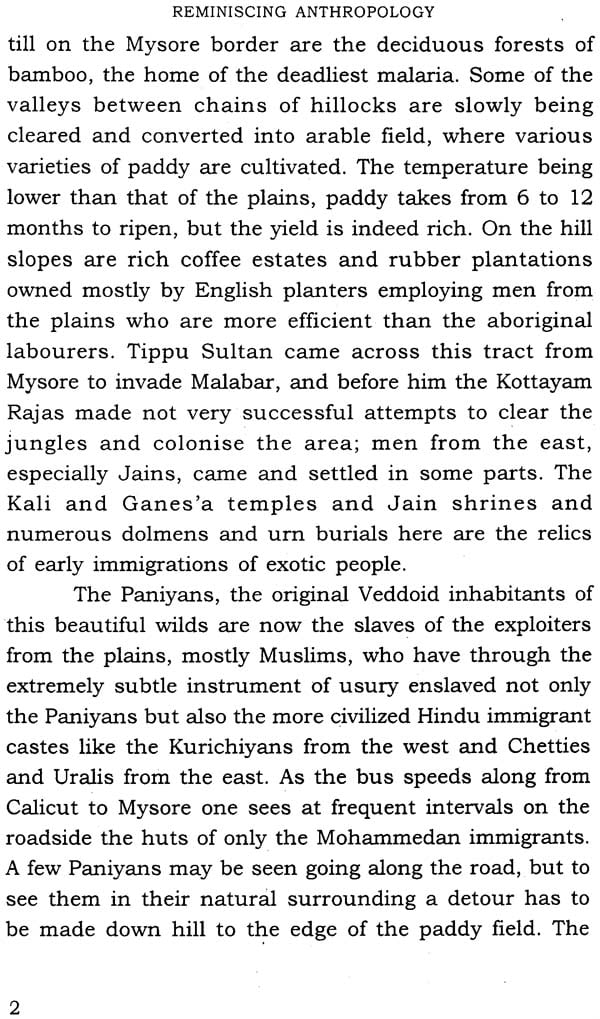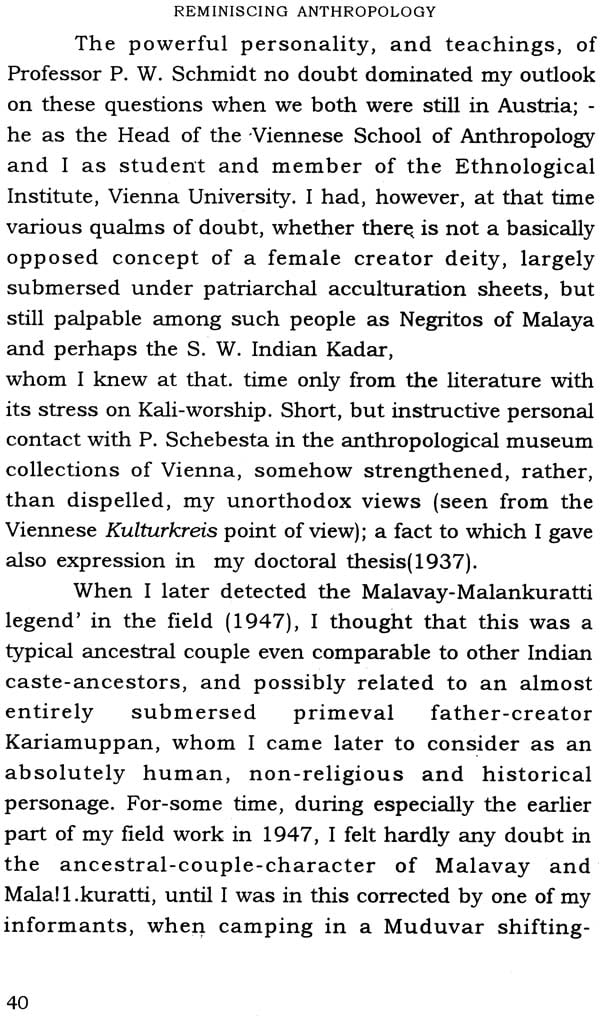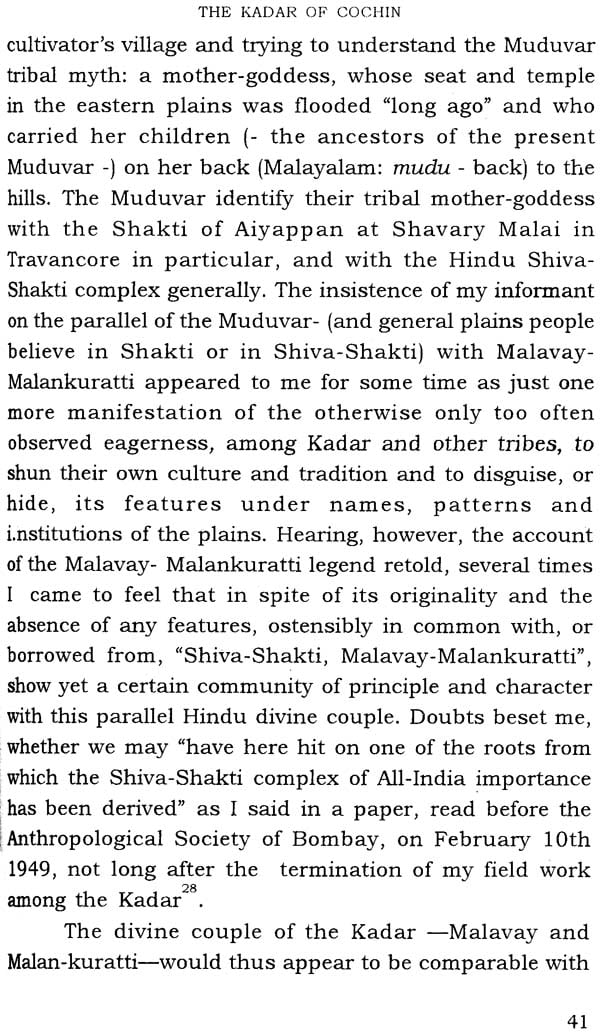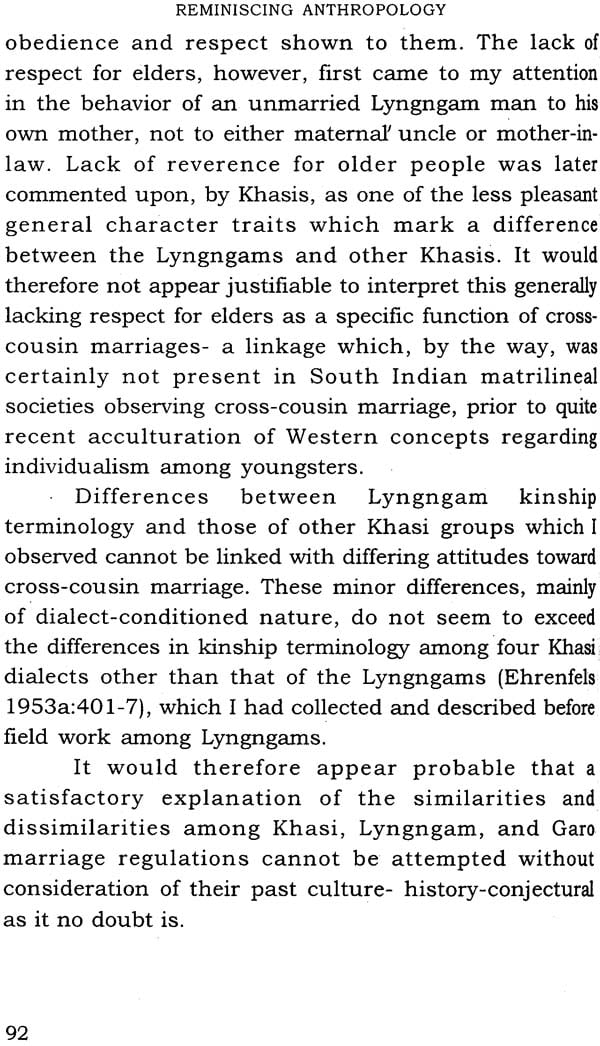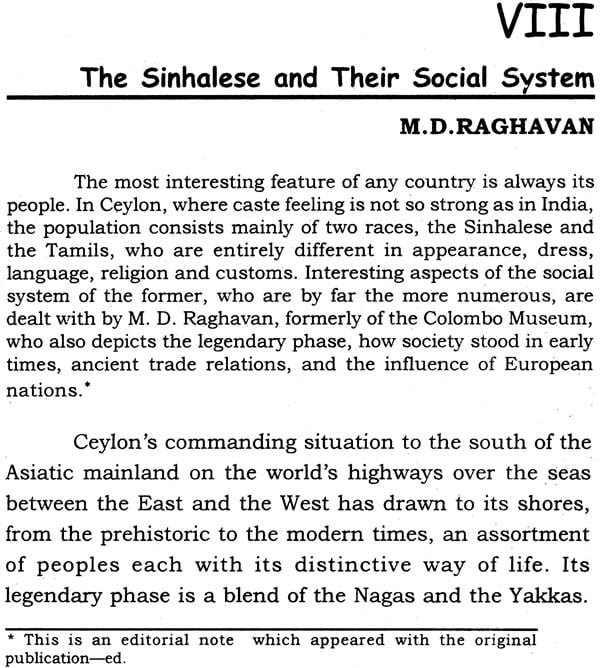
Reminiscing Anthropology
Book Specification
| Item Code: | NAJ405 |
| Author: | V.Sudarsen and S.Sumathi |
| Publisher: | University of Madras |
| Language: | English |
| Edition: | 2005 |
| Pages: | 200 |
| Cover: | Paperback |
| Other Details | 8.5 inch X 5.5 inch |
| Weight | 250 gm |
Book Description
Introduction
Ethnography as a study and record of cultures of "natives" by the colonial masters was the beginning of what later has come to be known as Anthropology. It is often said that Anthropology is a hand maiden of colonialism. This colonial beginning, obviously, left its indelible mark on Anthropology for a long time. However, Anthropology has emerged out of this colonial shield quite early, by about the end of nineteenth century itself. In spite of this, the strong stereotypes, biases and ethnocentric view points remain more or less intact and continue to tread on the toes of simple societies. What is more, this kind of ethno-centrism and racism continued till late 80s of twentieth century. It is also true that as one of the pioneering anthropologists of India, Ehrenfels, has noted that there was a marked ambivalence in the attitude of people towards the so called feeble sex. The traditional stereotype of superiority of races and the inferiority of women remained parallel without much of an effort on the part of the anthropologists to set the record straight.
This volume contains nine articles by the pioneering anthropology teachers of University of Madras. Four of them are directly related to the study of matrilineal groups or a study of the cult of the mother goddess. It is also interesting that these studies were published between 1936 and late 50s, and some of the articles represent a very crucial phase of development of anthropology in India. In terms of the broader transition from colonialism to independence this period is very important. The concerns of anthropology started changing considerably during this period. This was also the period when anthropology as an academic discipline was spreading its roots in several universities of India.
The early pioneers of anthropology in India were looking at social behaviour and social values within the frame work of the larger ethnographic mould. Aiyappan's article on 'Marriage by elopement of Paniyans of wynad' is one such article where in he has meticulously built the ethnographic background of the community and then contextualised the practice of marriage by elopement. One of Ehrenfels' three articles included in this volume is an extract from his book titled Kadar of Cochin. Ehrenfels has used a broad ethnographic frame work to present the Kadar culture.
In the second article Ehrenfels presents an elaborate and analytical understanding of matriliny among the Kasi and the Garo. His third article on "South Indian Social structure" is also an attempt to compare the south Indian society and the north Indian. In both these article there is a clear reflection of Ehrenfels' intial training under Schmidt in the Austrian school of diffussionism.
Both Aiyappan and Gopala Krishnan through their articles on Indo-Aryan funeral rite and the cult of Mother-godess respectively have presented another dominant school of anthropological writing influenced by the Indological research. Both of them have used diffussionism as a basis of their interpretation.
Raghavan presents the Ceylonese (now Sri Lankan) social system. In doing so he brings out the historical aspect of how the Ceylonese society evolved and was influenced different forces over a period of time. Obviously Raghavan's concerns include bringing out the pervading influence of Buddism, the influence of the colonial rulers including the Portuguese, Dutch and British.
"Dating the past in Kerala" by Krishna Iyer and "Asthetics in Pre-literate societies" by Gopalakrishnan provide two different perspectives, especially the later one which is a less explored anthropological area. In spite of this variation, the two authors follow a method quite widely used in anthropological research.
All the authors, whose selective works an incorporated in the present volume, were early teachers and researchers in the Department of Anthropology University of Madras. This volume is published to commemorate the pioneering research work done by the teachers of this department.
This volume, hopefully, will also provide a broader view of the anthropological publications over a period 0 two decades beginning with late 30's to late 50's of last century. This volume provides a vintage view for the students and researchers of anthropology a historical background of anthropological research in India at a very crucial time period.
The present volume is being brought out during the Diamond Jubilee Year (2005) of the Department of Anthropology of University of Madras. It is my duty here to acknowledge the help of all my colleagues of the department in planning and execution of the Diamond Jubilee Programmes.
In preparing the manuscript for this volume, I received tremendous and timely help from several individuals including my students, researchers and my colleagues.
I am thankful to the editors of various journals and books, from which the articles incorporated in this volume are drawn. I have acknowledged and cited the source of the articles. I thank all the editors. I am thankful to the university of Madras for providing financial assistance for bringing out this volume.
| Introduction | ||
| I | Marriage by Elopement among the Paniyans of Wynad | 1 |
| II | On An Indo-Aryan Funeral Rite | 13 |
| III | Kadar of Cochin | 23 |
| IV | Three Matrilineal Groups of Assam: A Study in Similarities and Differences | 65 |
| V | Towards understanding of South Indian Social Structure | 95 |
| VI | The Cult of the Mother-Goddess | 114 |
| VII | Dating the Past in Kerala | 132 |
| VIII | The Sinhalese and Their Social System | 153 |
| IX | Aesthetics in Pre-Literate Societies | 167 |
| Index |

